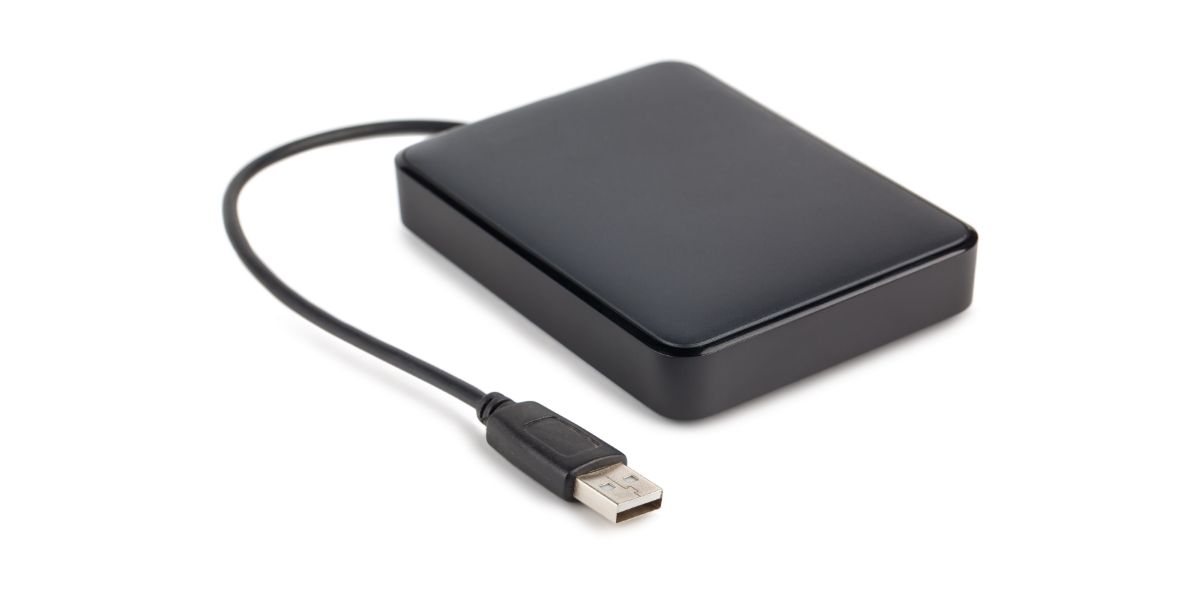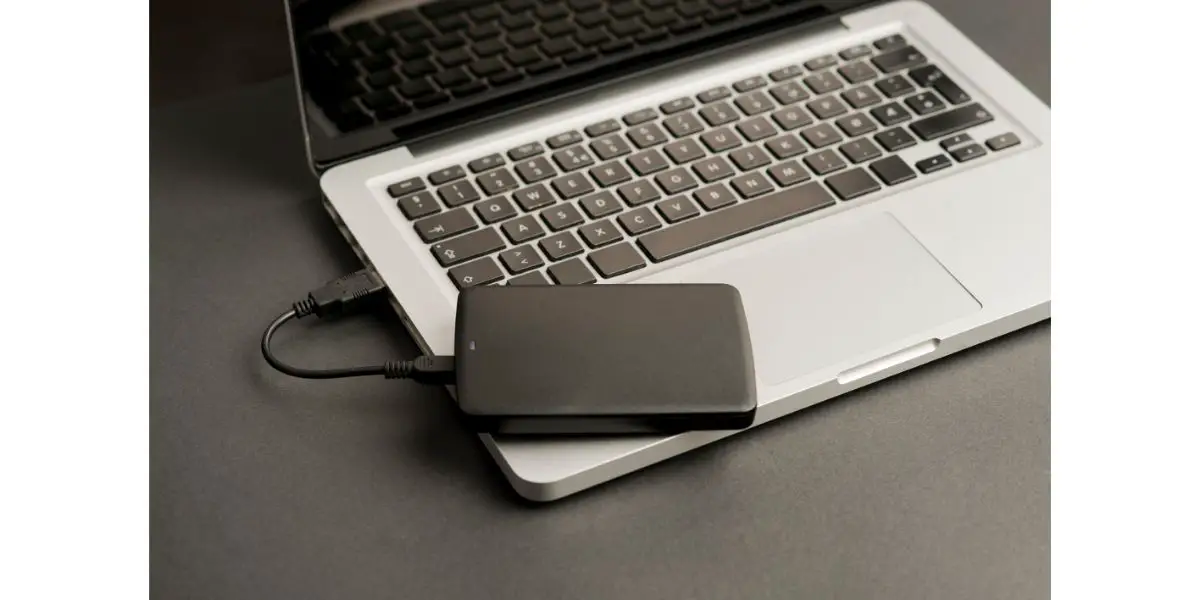Disclaimer: This post may contain affiliate links, meaning we get a small commission if you make a purchase through our links, at no cost to you. For more information, please visit our Disclaimer Page.
If you feel limited by the amount of space on your game console or computer, invest in an external hard drive. These small devices are easy to use and can have 8TB of storage or more. External hard drives can withstand some bumps here and there but…
Can they survive a drop? If so, how much damage can it have?
Table of Contents
What Do You Do When You Drop Your Hard Drive?
External hard drives are portable, which also leaves them susceptible to damage. All it takes is one hard crash to the floor, and you can say goodbye to it. It’s just as easy to drop one when it falls off your desk or out of your bag.
The biggest issue is that most external hard drives lack any built-in protection. If it falls, it might look okay on the outside, but some of the other working parts sustained some damage. Most hard drives will suffer damage whether they fall on or off, but you have a better chance of the drive surviving if it was off when it dropped.
As soon as you drop the hard drive, pick it up and see if it still works. Most external hard drives today come with an enclosure that offers more protection than you might think. Contact the brand that made the external to see if your warranty is valid.
If you have a warranty, it might cover the drop and pay for recovery services. You can also see if you saved backups anywhere else, such as on a device or in the cloud. You may need to pay a recovery professional to get the data off your external.
How Do I Know if My External Hard Drive is Damaged? (8 Signs)
Using it is the only way to tell if your external hard drive is damaged. Plug it into your computer or another device and try to access the files. A common sign that it’s damaged is when the hard drive beeps but does nothing else.
This lets you know that one part suffered enough damage that the external can no longer produce the speed needed to run. Check out some of the other signs that your external is damaged.
1. Clicking Sounds
Even if you can turn on the external and see some of your files, you might hear a loud clicking. It’s a sign that the hard drive cannot open any of its saved data.
It will keep clicking in an attempt to open the files. Go ahead and unplug it if you hear this noise.
2. Nothing Happens
If you try to use your external hard drive and nothing happens, you have a complete failure on your hands.
Try using it with a few different devices. There is a chance that only one device has a problem reading it.
3. Groaning
Another sign that the drive is damaged is that you hear a groaning sound. You may also hear it spinning or trying to spin, which sounds similar to a fan.
It often shows that the head failed. It can also be a sign that the spindle is damaged.
4. Failure to Recognize
When you plug in an external hard drive to your computer, it should recognize the hard drive even if it takes a few seconds or minutes identifying it. However, your computer may not recognize a damaged external hard drive.
After you plug it into your computer, open your settings and look for the drive. You may need to manually open it and see if any of your files are still there. If the external is a complete goner, your computer won’t recognize it at all.
5. Runs Loudly
One of the nice things about modern external hard drives is that they have a lot of storage space and run quieter than other devices do. After you drop the drive, try using it with the same device you usually do.
Check if the device can recognize it and whether it produces a loud noise when it runs. If the drive produces more noise than it did before, it likely suffered some damage during the fall.
6. Slow Access
You opened the external hard drive and gained full access. Before you heave a sigh of relief, try to open one of those files. A working external should open the file within seconds.
Any damage that happened during the fall can slow down the drive. You may find that it takes longer than it ever did before to open a file.
7. Missing Files
While it seems hard to believe, a fall can cause your external to lose some files you saved on it. Go over the file list to see what is still on the drive. Compare those files to the ones you backed up. If you notice any missing files, the drive suffered some damage.
8. Corrupted Files
Don’t celebrate as soon as you see a list of files on your hard drive. There’s no guarantee that you can still access all of those files. Open the file to make sure that it has the information you saved.
Then, try making a minor change to the document and save it. Even if the external hard drive survived the fall and saved your data, it may no longer let you save files to it because of internal damage.
Are External Hard Drives Fragile?
Many of the external hard drives you see on the market today come with enclosures. They are made of metal, plastic, rubber, or another material that acts as built-in safety.
If you drop the drive, the casing protects the internal components from impact. External hard drives without an enclosure are more fragile and prone to damage. However, you can often buy a case that protects them.
How Long Will an External Hard Drive Last?
The average lifespan of an external hard drive is around three to five years. It depends on how often you use it and how you store it.
If you drop it often, the hard drive may last for just a few years. On the other hand, it will last longer if you store it properly and keep it from high temperatures.
What Else Can Damage an External Hard Drive? (4 Things)
While drops are one of the biggest causes of damage to an external hard drive, they are far from the only cause. Make sure you look at some of the other ways you can damage yours.
1. Power Surges
Surge protectors are one of the best tools to have in your home. A power surge can happen in the blink of an eye and hit your external hard drive and fry it.
As most of the larger external hard drives require outside power, you should only use them with a surge protector.
You can also turn it off when you don’t use it. Power surges can make the hard drive spin without reading data and make your computer not recognize it.
2. Firmware Failure
Though firmware failure is less common, it can still affect an external hard drive. You might encounter a serious problem when you updated the drive with new firmware and it lost the connection in the middle of the process.
Other issues relate to the manufacturer of the hard drive. They might release an update that bricks the drive. When this happens, you cannot load your data. You may also find that your computer doesn’t recognize the hard drive.
3. Overheating
Anytime you use an external hard drive in a warm or hot room, you risk damaging it. Have you ever tried to play a game saved on your hard drive in the middle of a heatwave and found that it loaded slowly or didn’t load at all?
Heat can do quite a bit of damage to your external hard drive, even if you don’t use it, but keep it stored in a hot room. Check with the manufacturer to see the recommended temperature range for its storage.
4. Human Errors
Most of the damages are caused by human error or clumsiness. You might knock your external hard drive onto the floor when you’re in a hurry. This is just one thing caused by humans that can damage it.
Using the wrong cable or plugging it into the wrong port on a device can damage it. You can also damage your hard drive when you carry it in your backpack or the trunk of your car. Even if the external doesn’t hit the ground, other objects can hit and damage it.
Conclusion
Protecting your external hard drive lets you store more data on it and get more use out of it. While drops can cause some damage, the right enclosure or case will help. If you worry about the external suffering damage, take it to a recovery professional to preserve your data.


